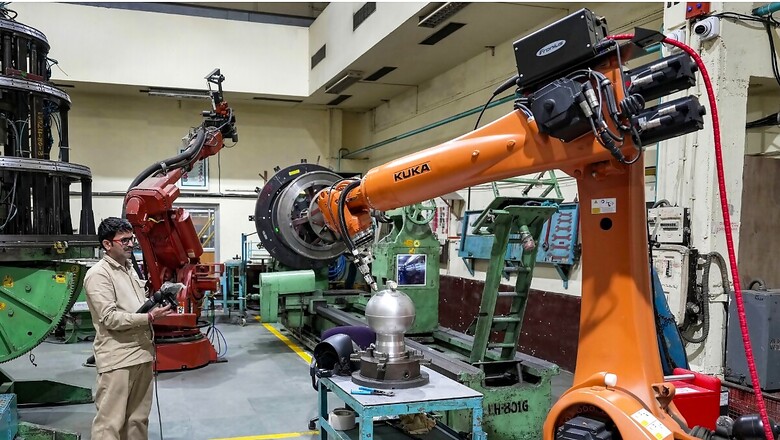
views
The eyes of world will be on Andhra Pradesh’s Sriharikota on Friday as the Indian Space Research Organisation (ISRO) launches the Chandrayaan-3 moon mission. Around 1,300 km from the space station, a facility in Mumbai will be cheering on one particular component of the lunar mission – the Vikas engine dedicated to the late astronomer and physicist Vikram Sarabhai.
The engine has been manufactured by Godrej Aerospace which is tucked away in a green zone along the Eastern Express Highway in the suburbs of Vikhroli. The plant has been one of the largest private manufacturers and suppliers for ISRO since 1985. Godrej Aerospace also had key contributions to Chandrayaan-1 and 2 and Mangalyaan space missions, besides participating in ISRO’s other endeavours.
Chandrayaan-3, set for lift-off at 2:35pm on Friday, will be a follow-up mission after the crash-landing of Chandrayaan-2 in September 2019 due to a software glitch. This will be India’s third lunar mission and it is among few countries to have undertaken such an ambitious project.
The Vikas engine has been installed at the top most part of the missile. Basic structuring, getting sheets in various shapes and welding them to mould them for the rocket were all done at the Godrej Aerospace unit. Laser technology was adopted for cutting and moulding the steel sheets.
As per the engineers working at the facility, it takes them approximately five months to prepare an engine, and each month an engine is sent to ISRO as per the requirement. Once these units are ready, they are transported at a slow speed of 20 km per hour via road, which takes approximately 10-14 days to reach Thiruvananthapuram from Mumbai.
Even the cryogenic engine, which will help put the lunar module in the orbit around Earth, has been prepared at this plant. The assembly of the satellite takes place at Thiruvananthapuram.
“We have come a long way since this plant and the partnership started in 1985. A few decades ago, for a CE-20, rather referred to as cryogenic engine, we had to depend on other countries. But now India has made tremendous progress in space technology and space mission, and these engines are produced within the country as a part of Aatmanirbhar Bharat,” said Maneck Behramkamdin, AVP and Business head at Godrej Aerospace.
“In the last nine years, India has witnessed a quantum jump in its space sector, bringing it at par with countries like the USA that started their space journey much earlier. The government’s focus on public-private participation has led to collaborations between premier space organizations like NASA and ISRO, with ISRO now working with nearly 150 private startups,” said Anil Verma, Executive Director & Chief Executive Officer, Godrej & Boyce.

















Comments
0 comment